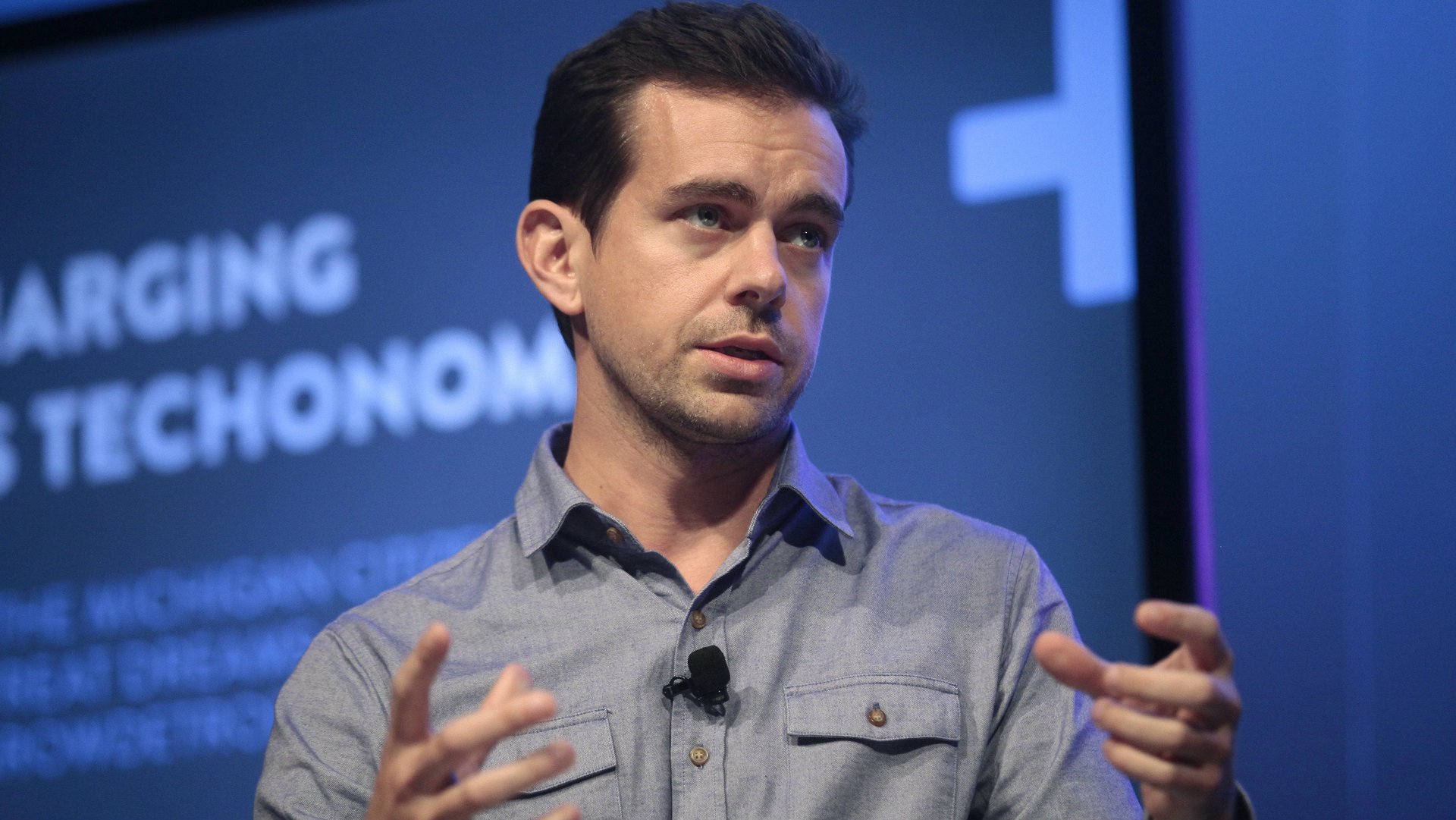Twitter says it’s banning Russian ads that Russia says it solicited
If the controversy over Russian ads placed on social media during the US 2016 presidential campaign could get any weirder, consider the spat today between Twitter CEO Jack Dorsey and Russia Today (RT), a Russian news outlet thought to be backed by the Kremlin.


If the controversy over Russian ads placed on social media during the US 2016 presidential campaign could get any weirder, consider the spat today between Twitter CEO Jack Dorsey and Russia Today (RT), a Russian news outlet thought to be backed by the Kremlin.
Shortly after Twitter released better-than-expected earnings this morning (Oct. 26), Dorsey tweeted about the platform’s decision to ban ads from RT and Sputnik “effectively immediately.” In a blog post, Twitter said its decision was spurred by its investigation into whether Russia bought political ads on its platform and the conclusion of US spy agencies that the two Russian news outfits “attempted to interfere with the election on behalf of the Russian government.”
We did not come to this decision lightly, and are taking this step now as part of our ongoing commitment to help protect the integrity of the user experience on Twitter…This decision is restricted to these two entities based our internal investigation of their behavior as well as their inclusion in the January 2017 DNI [Director of National Intelligence] report. This decision does not apply to any other advertisers. RT and Sputnik may remain organic users on our platform, in accordance with the Twitter Rules.
Twitter said it would take the $1.9 million it believes it has earned from the companies’ ads since 2011 and donate it to support research into “the use of Twitter in civic engagement” and the use of “malicious automation and misinformation.”
Dorsey didn’t say so, but his announcement looks like a response to a tweet a couple of hours earlier from RT’s editor-in-chief, Margarita Simonyan, outlining how his company approached RT in 2016 to advertise on the platform.
In a story on RT’s site, Simonyan’s deputy, Kirill Karnovich-Valua, related how Twitter sought advertising dollars to help RT push its election news coverage:
The RT and Twitter teams held a number of direct negotiations, during which we brainstormed potential media strategy ahead of American elections in 2016. The first meeting dates back to as early as April 2016, and involved senior marketing and news partnerships managers from Twitter…
The main idea pitched by Twitter to RT was “to take a stand.” The more money RT spent, the bigger the reach to American voters that Twitter would provide. At the meeting, the RT team was shown an in-depth presentation giving background into Twitter’s advantages as a platform of choice for the election.
The RT post included screenshots it said were from a Twitter presentation. Among other things, Twitter promised RT a bunch of new tools including a customized emoji-hashtag that would help RT’s coverage stand out on Twitter. The whole package was too expensive, RT said, and it declined. (“We do not have any comment on our private conversations with any advertiser, even a former advertiser,” a Twitter spokesperson told Quartz.)
On Nov. 1 the US Senate’s intelligence committee will hear testimony from the digital advertising companies, including Twitter, Facebook, and Google, about how Russia used their platforms to spread disinformation during the election campaign. It promises to be rather interesting.